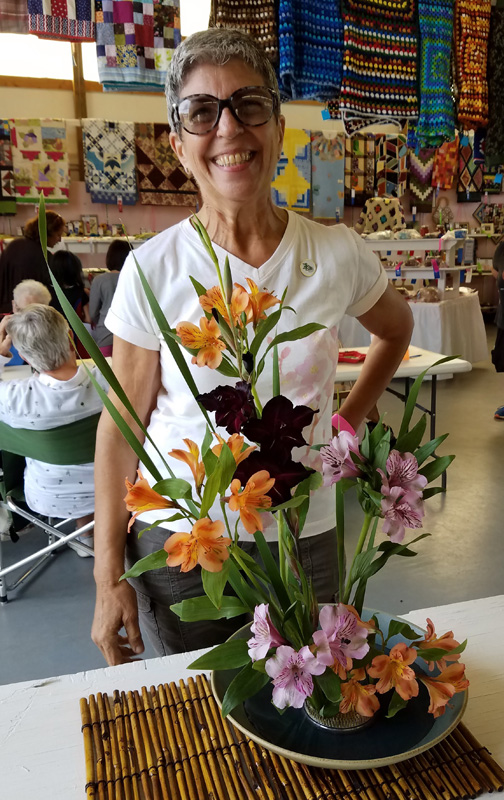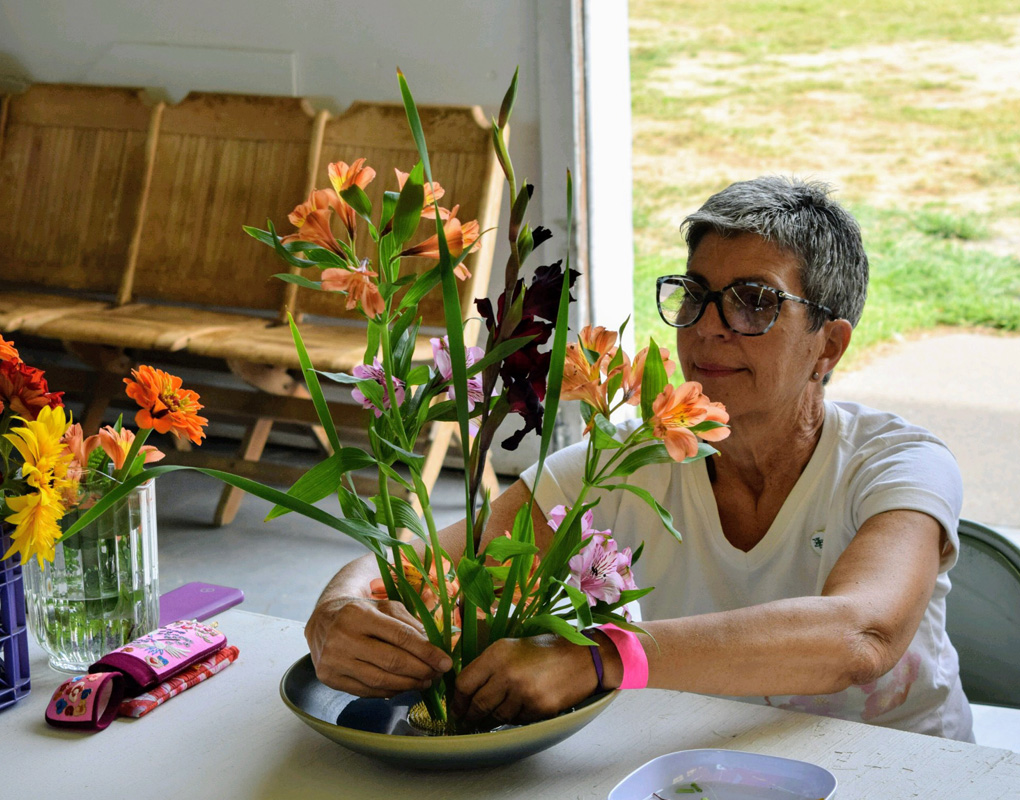Ikebana (Kado)
Japanese Flower Arranging
“Kado” or “The Way of Flowers” began in China over 2300 years ago. Kado teaches us to clearly see the wisdom in nature, in ourselves and in others. The ultimate purpose in Kado is not to make pleasing flower arrangements, but to cultivate appreciation for each moment, to work with obstacles, and to develop respect for all forms of life.
Kado, along with Buddhism, was introduced to Japan from China and Korea in the seventh century, and thus began the practice of using flowers as offerings in temples.The Japanese word “Ikebana” arose, meaning “living or natural flowers”. The formalized version of Ikebana didn’t begin until the Muromachi period around the 15th or 16th century. Ikebana arrangements have since become more secular, displayed as art forms in people’s homes. However, Ikebana is seen as more than just decorative, it is a spiritual process that helps one develop a closeness with nature and merges the indoors and outdoors.
Lj Stewart was smitten with Kado during her first trip to the Far East in the 1970’s and began studying the Art of Asian Flower Arranging immediately. Being an avid gardener, Lj notes a particular delight in expressing the natural cycle of life via Ikebana, Japanese Flower Arranging. In practice, there is no real difference in the feeling of Kado vs Ikebana, they are one in the same. However, the various schools, of which there are thousands, each have their own artistic notoriety and curriculum.
“I’ve had fabulous opportunities to study in China and Japan while traveling. I still study with a number of Instructors of different schools in NY, Vermont and Canada. I haven’t ascribed to an official Kado/Ikebana curriculum, thus I draw from varied traditions…”









